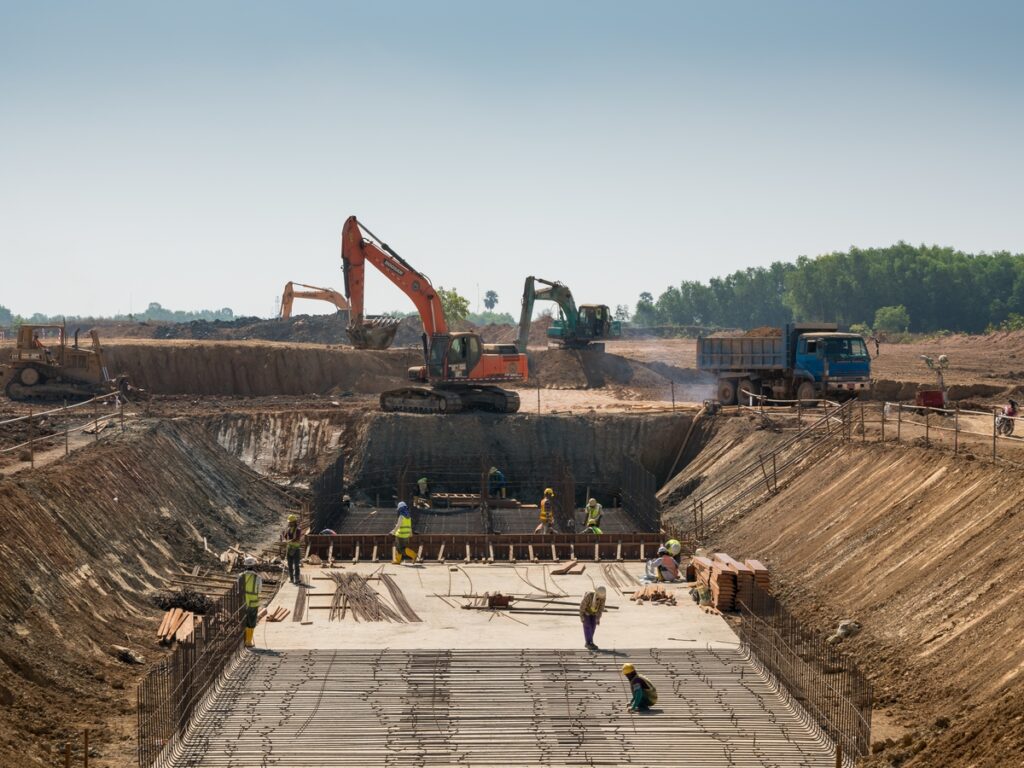Updated by Nazanin Ghodsian, 12/09/2024
India’s construction industry is a major force behind the nation’s economic expansion and has a significant impact on the development of its infrastructure. With over 40 million workers and an approximate 8% GDP contribution, it is one of India’s biggest industries and a vital component of economic growth.
India is experiencing an unprecedented demand for residential, commercial, and industrial areas as a result of its fast urbanization and expanding population. Large-scale infrastructure projects and government programs like the “Smart Cities Mission” and “Make in India” have further boosted the industry. These programs seek to strengthen the industry’s critical role in the advancement of the nation by modernizing urban infrastructure, fostering industrial growth, and advancing sustainable development.
India’s engineering prowess and forward-thinking outlook are demonstrated by some of its most ambitious construction projects. Monumental efforts to improve connectivity, stimulate economic growth, and promote national integration include the Atal Tunnel, the Chenab Bridge, the world’s tallest rail bridge, the Navi Mumbai International Airport, and the vast Delhi-Mumbai Industrial Corridor. India’s dedication to constructing top-notch infrastructure while overcoming technical and topographical obstacles is evident in each of these projects.
Alongside these massive projects, programs like the Bharatmala Pariyojana, the Bengaluru Metro, and the Dwarka Expressway demonstrate creative methods of infrastructure development. These initiatives, which are supported by significant financial resources and cutting-edge technologies, are establishing standards for resilience and sustainability. For example, the Bharatmala program alone entails building 35,000 kilometers of roadways, guaranteeing improved road connectivity throughout the nation.
Despite these advancements, the construction project in India faces challenges such as budget overruns, project delays, and safety concerns. To solve these problems and expedite project execution, however, strategic solutions are being put into place, such as public-private partnerships and digital technologies like Building Information Modeling (BIM).
In addition to influencing the country’s physical landscape, India’s construction sector is establishing the groundwork for future economic expansion and social change. The industry continues to play a vital role in India’s ascent to prominence in the global economy because to its bold initiatives and creative tactics.
Table of Contents
Background on the Construction Industry in India
The construction industry in India has experienced significant growth and transformation over the years, playing a pivotal role in the country’s economic development and infrastructure enhancement. India’s construction sector is renowned for its diversity, encompassing residential, commercial, industrial, and infrastructure projects that contribute to the nation’s progress.
One of the key drivers behind the industry’s robust growth is the rapid urbanization witnessed in India. As the population continues to migrate to urban centers, there is an increasing demand for housing, commercial spaces, and improved infrastructure. This surge in urban development has propelled the construction industry to the forefront of economic activities.
The government’s emphasis on ambitious infrastructure construction project in India has further fueled the construction sector’s expansion. Initiatives like “Make in India” and “Smart Cities Mission” have catalyzed infrastructural developments across the country, fostering the construction of highways, bridges, airports, and metro systems. The implementation of the Goods and Services Tax (GST) has also streamlined taxation processes, contributing to a more organized and efficient construction ecosystem.
In addition to domestic factors, India’s construction industry has attracted international attention and investments. Global construction firms and investors are increasingly drawn to the opportunities presented by India’s burgeoning market. This influx of international collaboration has not only infused capital but has also introduced advanced technologies and best practices, elevating the overall standards of construction in the country.
However, the industry has faced its share of challenges. Regulatory hurdles, bureaucratic complexities, and issues related to land acquisition have at times posed obstacles to the seamless progress of construction project in India. Nonetheless, the government’s ongoing efforts to simplify regulations and promote ease of doing business are aimed at addressing these challenges and fostering a more conducive environment for construction activities.
The background of the construction industry in India reflects a dynamic landscape characterized by growth, diversification, and transformative initiatives. As the nation continues on its path of development, the construction sector remains a vital contributor, shaping the physical and economic contours of India’s future.
Top Construction Project in India 2024
Here is the list of top construction project in India, their description, total cost, etc.
1. Navi Mumbai International Airport
Total Cost: ₹160 billion (US$2.0 billion)
Scheduled for inauguration by the end of 2024, the Navi Mumbai International Airport (NMIA) is poised to revolutionize India’s aviation landscape, boasting the distinction of being the country’s first airport with multi-modal connectivity. Nestled in the Raigad district, this airport is strategically positioned to transform the dynamics of Navi Mumbai while alleviating the burden on the Chhatrapati Shivaji International Airport in Mumbai.
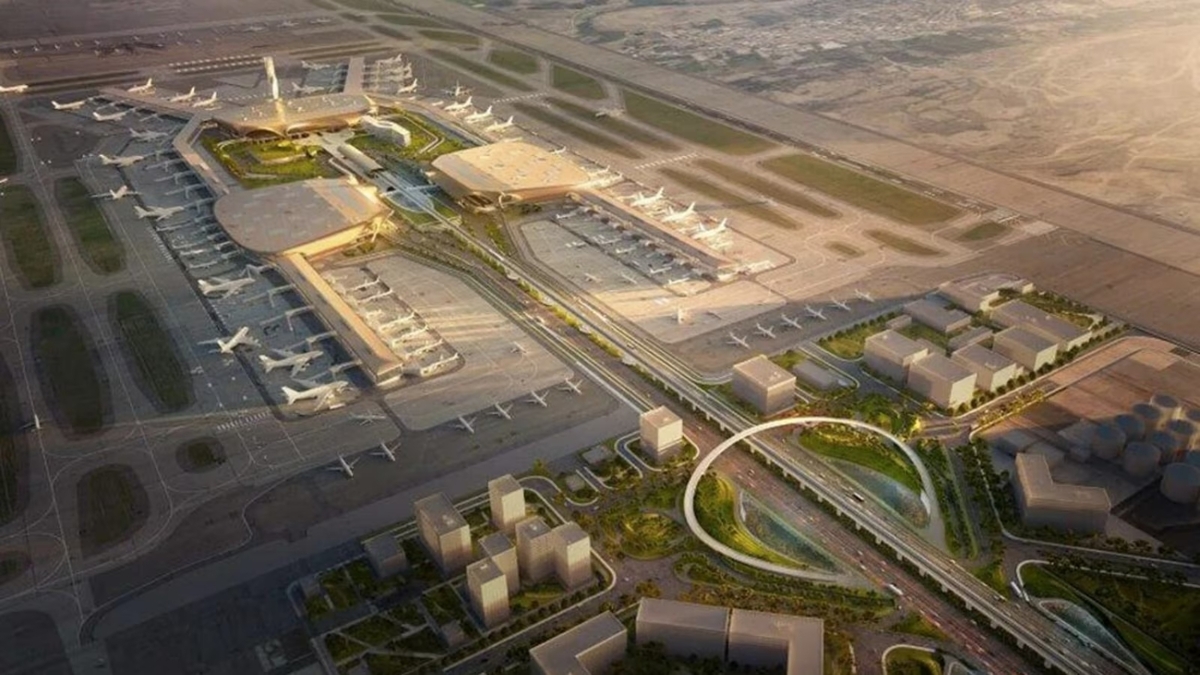
In its inaugural year, NMIA is projected to amplify passenger capacity by an impressive 20 million individuals annually. This figure is expected to surge dramatically to accommodate a staggering 90 million passengers per annum upon the completion of its final phase. Notably, NMIA is envisioned as India’s largest planned General Aviation facility, featuring over 67 dedicated General Aviation aircraft stands and a separate heliport operation.
The construction of NMIA unfolds in five distinct phases, culminating in the interconnected integration of all four terminals. This visionary design extends beyond the terminals, ensuring seamless operations both airside and landside, facilitating efficient hub operations. Passenger terminals are meticulously crafted to optimize convenience, offering efficient walking distances from check-in counters to boarding gates.
Beyond its operational prowess, NMIA is set to captivate travelers with a unique blend of traditional Indian ambiance and futuristic elegance. The airport’s architectural finesse marries functionality with cultural aesthetics, creating an ambiance that reflects India’s rich heritage while embracing cutting-edge design principles.
As the Navi Mumbai International Airport emerges on the horizon, it not only signifies a crucial addition to India’s aviation infrastructure but also stands as a testament to the nation’s commitment to harmonizing tradition with innovation in its pursuit of excellence.
2. Chenab bridge
Total Cost: $168 million
The Chenab Bridge, situated between Bakkal and Kauri in the Reasi district of Jammu and Kashmir (J&K), India, stands as an engineering marvel. Soaring at a height of 359m, this 1,315m-long structure holds the distinction of being the world’s tallest rail bridge. A monumental construction project in India with a cost of Rs14.86 billion ($181 million), the bridge is a crucial component of the Jammu-Udhampur-Srinagar-Baramulla Rail Line (JUSBRL) initiative led by the Ministry of Indian Railways. Featuring a 14m-wide dual carriageway and a 1.2m-wide central verge, the Chenab Bridge was completed in August 2022, with track laying accomplished in March 2023.
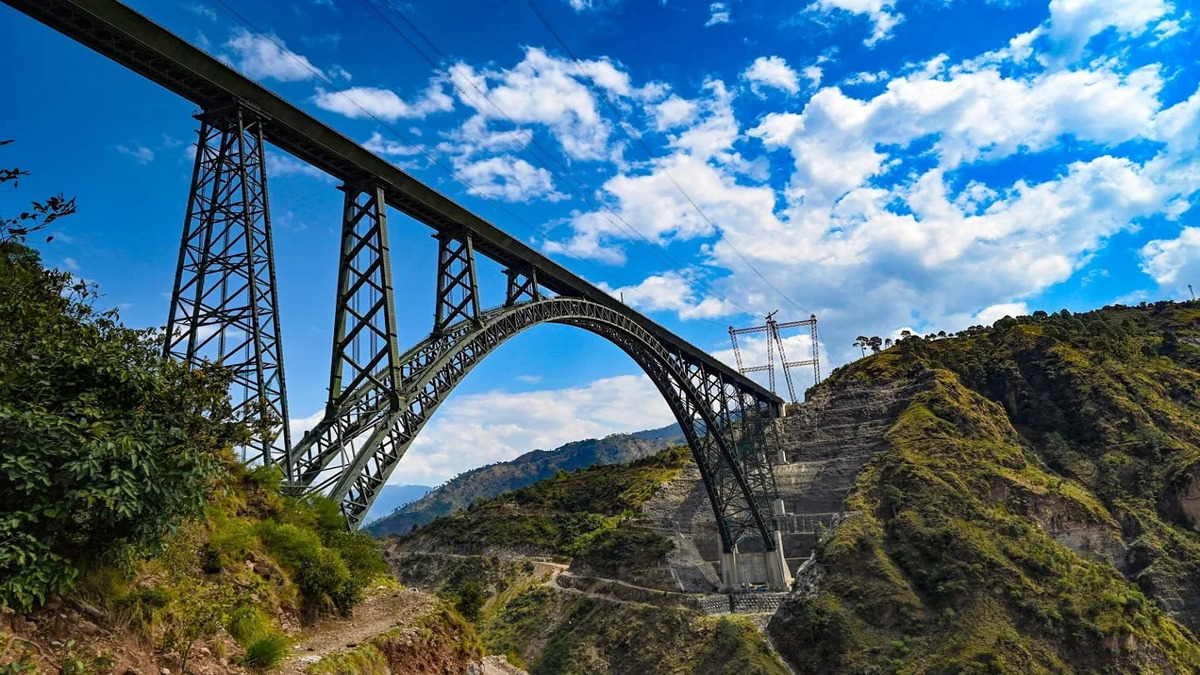
Scheduled for operational commencement in 2024, the Chenab Bridge is designed to endure for 120 years, making a significant contribution to local economic development and enhancing transportation accessibility in the region.
The rationale behind such an ambitious construction project in India lies in the challenging topography of J&K, where the mountainous terrain has posed considerable difficulties for residents in terms of travel. Recognizing the urgent need for improved transportation facilities, the Government of India proposed a national railway project to connect J&K with the rest of the country.
Launched in 2003, the JUSBRL project aims to cover a 345km section connecting Jammu and Baramulla, thereby improving mobility within J&K and fostering connectivity with the rest of India. The completed Jammu-Udhampur section, inaugurated in April 2005, was a significant milestone. Progress continues on the Udhampur-Baramulla section, with approximately 161km out of 272km completed, and the remaining 111km Katra-Banihal section is expected to be finished in 2024.
The comprehensive construction project in India involves the construction of various bridges and tunnels along the route, with the Chenab Bridge taking center stage as it spans the deep Chenab River, providing vital access to the Kashmir Valley from Udhampur. This transformative railway initiative promises to reshape regional connectivity and serve as a testament to India’s commitment to infrastructural development.
3. Atal Tunnel
Total Cost: ₹3,200 crore (US$438 million)
Undertaking excavation amidst heavy snowfall during winter posed a formidable challenge, particularly for a tunneling construction project in India that demanded precision and continuity. The excavation efforts were dual-sided, commencing from both ends. However, the closure of Rohtang Pass in winter rendered the north portal inaccessible during this season. Consequently, excavation operations were exclusively conducted from the south portal during the winter months. This resulted in an asymmetry in progress, with approximately one-fourth of the tunnel being excavated from the north end, while the remaining three-fourths were pursued from the south.
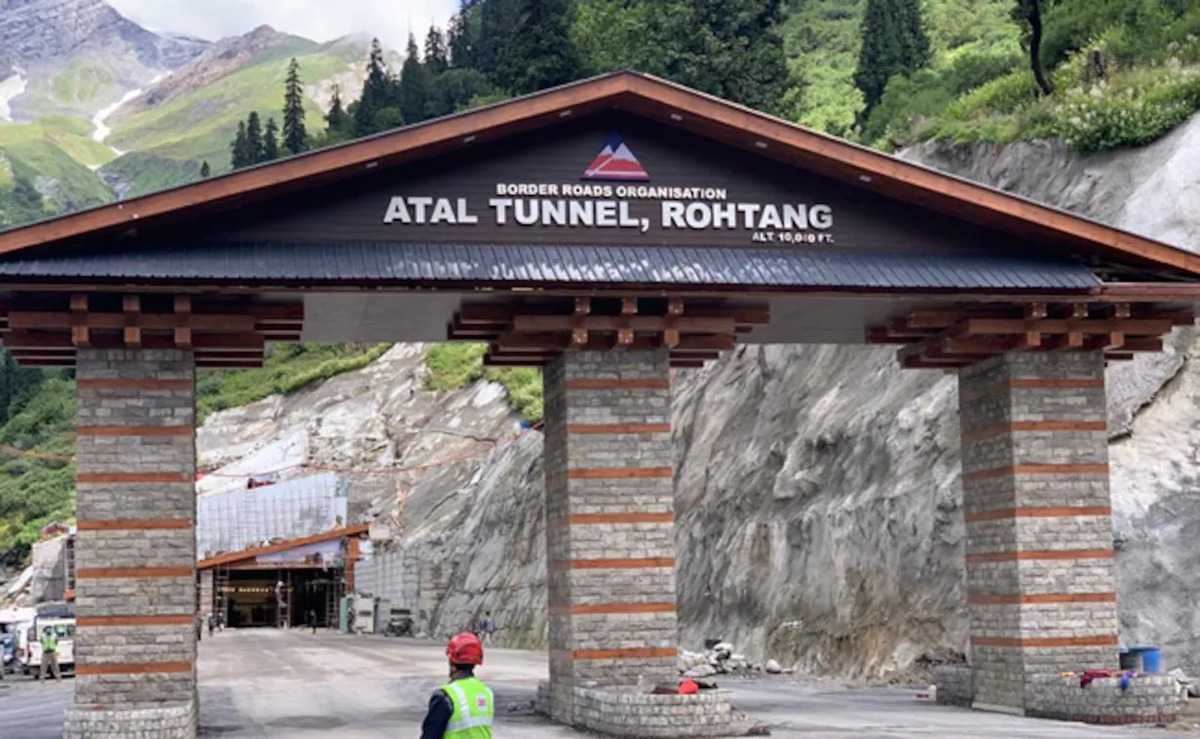
The Border Roads Organisation (BRO) stands as a pivotal force in India, specializing in road construction and providing indispensable support to the Indian Armed Forces. Its operational scope extends to the development and maintenance of road networks not only within India’s border areas but also in friendly neighboring countries. This expansive responsibility spans 19 states, three union territories (including Andaman and Nicobar Islands), and countries such as Afghanistan, Bhutan, Myanmar, Tajikistan, and Sri Lanka.
As of the year 2021, BRO’s remarkable contributions include the construction of over 50,000 kilometers of roads, the establishment of more than 450 permanent bridges with a cumulative length exceeding 44,000 meters, and the development of 19 airfields strategically positioned in key locations. Moreover, BRO plays a pivotal role in maintaining this extensive infrastructure, employing measures such as snow clearance operations.
Notably, BRO plays a vital role in the enhancement and construction of crucial India-China Border Roads. The organization draws its personnel from the General Reserve Engineer Force (GREF), constituting the core cadre, and also includes officers and troops from the Indian Army’s Corps of Engineers on extra regimental employment (on deputation). Recognized in the Order of Battle of the Armed Forces, BRO ensures its readiness to provide support whenever required. The organization’s motto, “Shramena Sarvam Sadhyam,” encapsulates its ethos, emphasizing the belief that everything is achievable through hard work.
4. Delhi-Mumbai Industrial Corridor Construction Project
Total Cost: around $100 billion overall
The Government of India is actively advancing the Delhi-Mumbai Industrial Corridor (DMIC), marking it as the inaugural industrial corridor along the Western Dedicated Freight Corridor (DFC) that links Delhi and Mumbai, covering a vast stretch of 1504 km. This corridor traverses through the states of Uttar Pradesh, Delhi NCR, Haryana, Rajasthan, Gujarat, and Maharashtra, with its terminals situated at Dadri in the Delhi NCR and Jawaharlal Nehru Port (JNPT) near Mumbai.
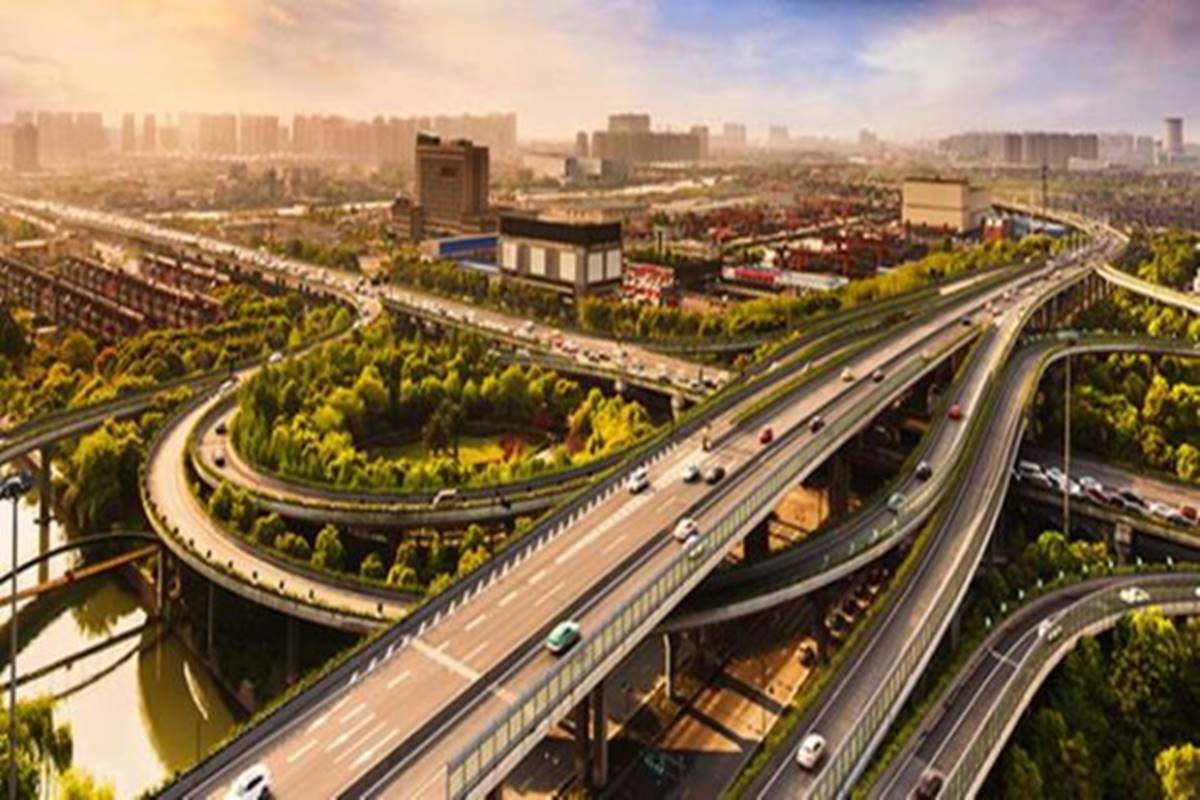
The DMIC construction project in India spans multiple states, namely Uttar Pradesh, Haryana, Rajasthan, Madhya Pradesh, Gujarat, and Maharashtra, aligning with the Western Dedicated Freight Corridor (DFC). Several construction project in India under the DMIC umbrella are in various phases of development, contributing to the economic and infrastructural growth of the region.
These construction project in India include the Dholera Special Investment Region (DSIR) in Gujarat covering 22.5 sq. km, the Shendra-Bidkin Industrial Area (SBIA) near Aurangabad, Maharashtra spanning 18.55 sq. km, and the Integrated Industrial Township – Greater Noida (IITGN) in Uttar Pradesh encompassing 747.5 acres. Other significant construction project in India include Integrated Industrial Township – Vikram Udyogpuri (IITVU) in Madhya Pradesh (1,100 acres), Multi-Modal Logistics Hub in Nangal Chaudhary, Haryana (886 acres), and Dighi Port Industrial Area in Maharashtra (6056 acres), among others.
Notably, the trunk infrastructure works for Integrated Industrial Township – Greater Noida (IITGN) in Uttar Pradesh and Integrated Industrial Township – Vikram Udyogpuri (IITVU) in Madhya Pradesh have been completed, indicating substantial progress. The land allotment has commenced for various regions, including DSIR, SBIA, IITGN, and IITVU, attracting investments and witnessing the initiation of production by various companies.
An important milestone occurred on 7th September 2019, when the Hon’ble Prime Minister dedicated the Shendra Industrial Area (under DMIC) to the Nation, marking a significant step forward in the realization of the DMIC construction project in India. The completion and progress of trunk infrastructure in key areas like DSIR and SBIA further underscore the commitment to enhancing industrial and economic prospects in the region.
5. Dwarka Expressway
Total Cost: Rs 10,000 crore
The Dwarka Expressway project (NH 248-BB), spanning a length of 29.10 km, is an ongoing endeavor to establish an access-controlled expressway. The project’s route alignment connects Mahipalpur (Shiv Murti) in Delhi with Kherki Dhaula via New Gurgaon (Gurugram) in Haryana. Initially conceptualized as the Northern Peripheral Road (NPR) in 2006, the construction project in India transitioned to the oversight of the National Highway Authority of India (NHAI) in 2016.
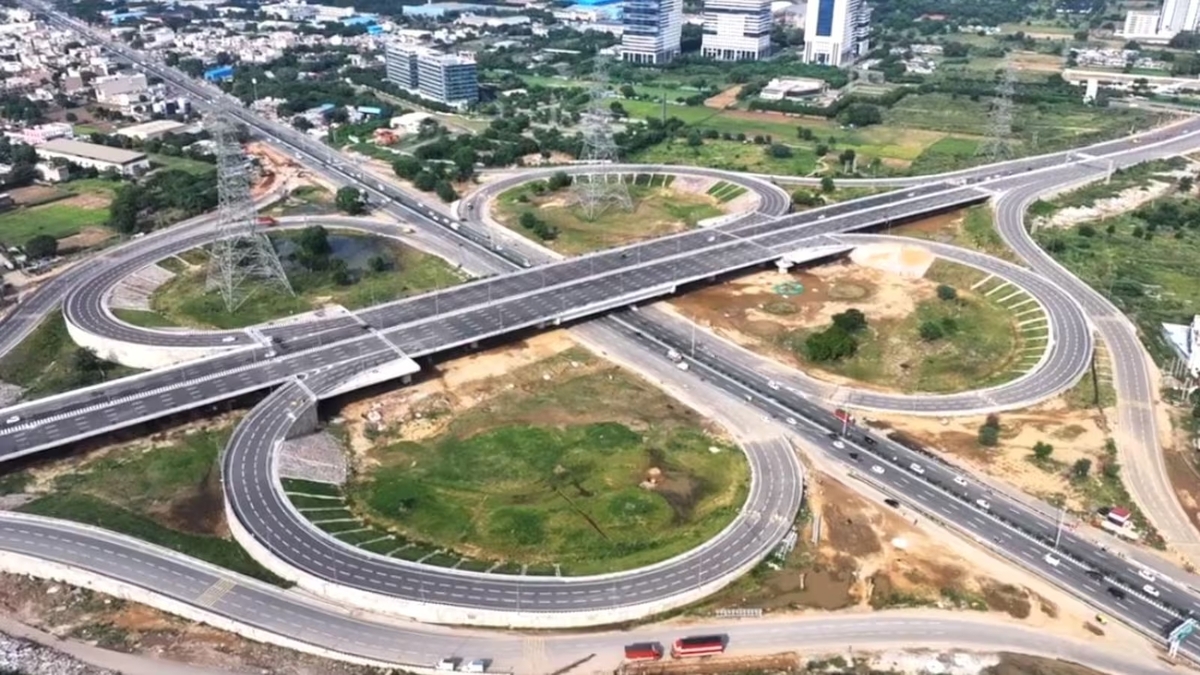
Jointly undertaken by J Kumar and Larsen & Toubro, the expressway boasts an extensive infrastructure plan, featuring 20+ flyovers/bridges, 2 rail overbridges/underpasses, 11 vehicle underpasses, 20 underground pedestrian crossings, and a dedicated 2.5m wide cycle/bike path. The total estimated cost for this ambitious construction project in India is Rs. 8,662 crore, signaling a substantial investment in enhancing regional connectivity.
Scheduled for completion and opening in June 2023, the Dwarka Expressway has encountered a shift in its original deadline, now extending beyond the initially targeted date of December 2022. The construction project in India follows an Engineering, Procurement & Construction (EPC) model, emphasizing comprehensive planning and execution.
Owned by the NHAI, the expressway encompasses 8 lanes along with local service lanes, facilitating efficient traffic flow. Meanwhile, the Delhi Metro Rail Corporation (DMRC) has envisioned a metro line along the Dwarka Expressway. However, like several other projects, its progression awaits approval from the Haryana Government.
Noteworthy within the project’s scope is the incorporation of a new 5 km tunnel, strategically planned to connect with Terminal 3 at Delhi’s Indira Gandhi International (IGI) Airport. This tunnel signifies a strategic enhancement to transportation infrastructure, further integrating the expressway with crucial airport connectivity. As the construction project in India unfolds, it is poised to redefine regional accessibility and connectivity, contributing to the broader infrastructural landscape of the Delhi-NCR region.
6. Bengaluru Metro
Total Cost: Rs 16,041 crore
The Bangalore Metro, colloquially known as Namma Metro, stands as a testament to the transformative urban Mass Rapid Transit System (MRTS) in Bengaluru, the capital and largest city of Karnataka. Comprising 2 lines and an extensive network of 51 stations, the metro system has become an integral part of the city’s transportation infrastructure.
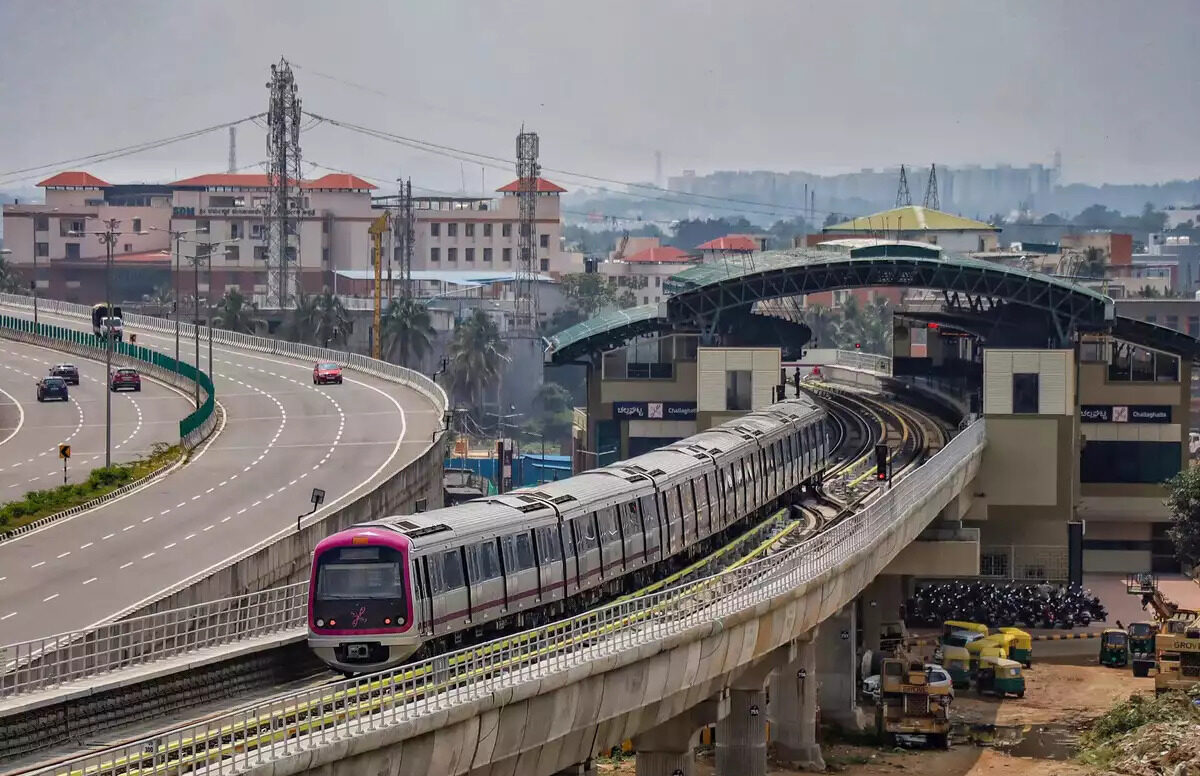
The initiation of Bangalore Metro Phase 1 marked a significant milestone, commencing construction in April 2007 with a network span of 42.30 km. The Purple Line’s inaugural section, linking Baiyyappanahalli to MG Road, commenced operations in 2011, while the sixth and final section was inaugurated by India’s President on June 17, 2017, heralding the commencement of commercial operations the following day.
Moving forward, the ambitious Bangalore Metro Phase 2, covering a substantial 73.921 km, began its construction journey in September 2015. Despite facing funding challenges, major civil construction contracts were eventually awarded in the first half of 2017. The extension of the Green Line to Silk Institute became operational in January 2021, offering a glimpse into the system’s expansion. The full realization of Phase 2, inclusive of a 13.9 km underground section on the Pink Line, is anticipated no earlier than 2024, culminating in a comprehensive metro network spanning 116.25 km.
Looking ahead, the visionary Bangalore Metro Phase 3 construction project in India is currently in the conceptual stage, envisaging routes covering an extensive 105.55 km. Notably, segments totaling 18 km (Central Silk Board to KR Puram) and 38 km (KR Puram to KIAL Airport) have been fast-tracked for concurrent construction with Phase 2 under the designations Phase 2A and Phase 2B, respectively. As Bangalore continues to evolve, the metro system stands as a vital pillar of its burgeoning urban landscape, facilitating seamless connectivity and contributing to the city’s sustainable development.
7. Bharatmala
Total Cost: ₹692,324 crore (US$87 billion)
The Ministry has undertaken a comprehensive assessment of the National Highways (NHs) network to enhance road connectivity to border areas, develop coastal roads, including connectivity for non-major ports, and improve the efficiency of national corridors. This initiative is part of the Bharatmala Pariyojana, which encompasses various construction project in India such as the development of economic corridors, inter corridors, feeder routes, and integration with Sagarmala.
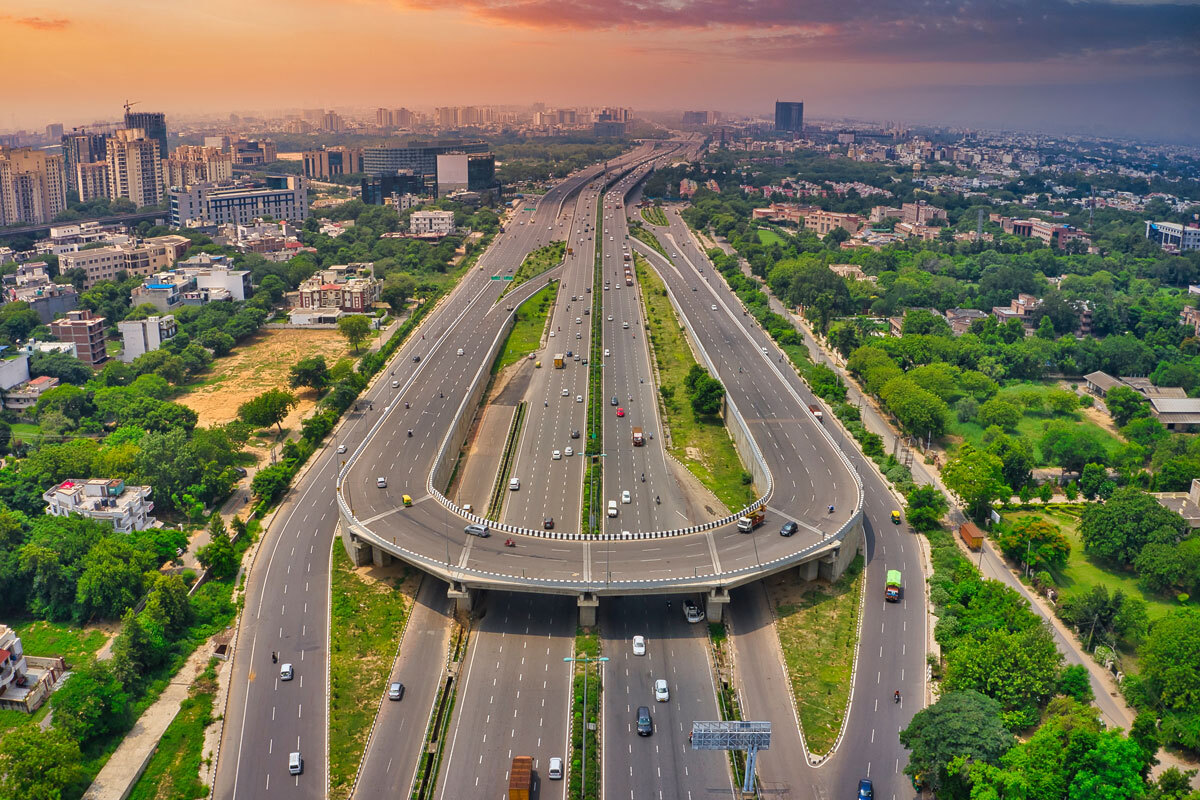
The Bharatmala Pariyojana envisions the development of approximately 26,000 km of economic corridors, in addition to the existing Golden Quadrilateral (GQ) and North-South and East-West (NS-EW) corridors. These corridors are anticipated to handle a significant portion of freight traffic on roads. Furthermore, the program identifies around 8,000 km of inter corridors and 7,500 km of feeder routes to enhance the effectiveness of economic corridors and existing GQ and NS-EW corridors.
To alleviate traffic congestion and improve logistic efficiency, the initiative includes the development of ring roads, bypasses, and elevated corridors. A total of 28 cities have been earmarked for the construction of ring roads, with 125 choke points and 66 congestion points identified for necessary improvements. Additionally, 35 locations have been pinpointed to establish multimodal logistics parks, aimed at reducing congestion, enhancing logistic efficiency, and lowering logistics costs for freight movements along the proposed corridors.
The Public Investment Board (PIB) endorsed the proposal during its meeting on June 16, 2017, and the Cabinet Committee on Economic Affairs (CCEA) subsequently approved Bharatmala Pariyojana Phase-I. The approved estimated cost for Bharatmala is Rs. 6,92,324 crore, which includes funding from cess collected from petrol and diesel, toll revenue, additional budgetary support, expected monetization of National Highways through Toll-Operate-Transfer (TOT), internal and extra-budgetary resources, and private sector investment, as per the financing plan up to 2021-22.
Challenges and Solutions
Construction projects, while essential for infrastructure development, often face various challenges that can impact timelines, budgets, and overall project success. Identifying these challenges and implementing effective solutions is crucial for ensuring the smooth execution of construction projects. Here are some common challenges and potential solutions:
- Budget Overruns:
- Challenge: Unforeseen expenses, design changes, or inflation can lead to budget overruns.
- Solution: Thoroughly assess construction project requirements, conduct detailed cost estimations, and establish contingency funds. Regularly review and update the budget throughout the project.
- Project Delays:
- Challenge: Delays can arise due to weather conditions, regulatory approvals, unforeseen site conditions, or supply chain disruptions.
- Solution: Develop realistic project timelines, account for potential delays in planning, and implement efficient project management practices. Regularly communicate with stakeholders to address issues promptly.
- Safety Concerns:
- Challenge: Construction sites pose inherent safety risks, and accidents can lead to injuries or fatalities.
- Solution: Prioritize safety through rigorous training, implementation of safety protocols, regular inspections, and the use of personal protective equipment (PPE). Foster a safety culture among all project stakeholders.
- Design Changes:
- Challenge: Changes in project requirements or design alterations can disrupt workflows and impact project schedules.
- Solution: Encourage clear communication between project stakeholders, conduct thorough initial project planning, and establish a formal change order process to manage design changes efficiently.
- Supply Chain Disruptions:
- Challenge: Issues such as material shortages, transportation delays, or geopolitical factors can disrupt the supply chain.
- Solution: Diversify suppliers, maintain buffer stock for critical materials, and stay informed about potential disruptions. Establish contingency plans to address supply chain challenges.
- Regulatory Compliance:
- Challenge: Construction projects often need to comply with numerous regulations and permits, which can be complex and time-consuming.
- Solution: Engage with regulatory authorities early in the planning phase, maintain open communication, and proactively address compliance issues. Employ experienced professionals who are well-versed in local regulations.
- Environmental Sustainability:
- Challenge: Construction activities can have environmental impacts, leading to concerns about sustainability and ecological preservation.
- Solution: Integrate sustainable practices into project planning, adopt eco-friendly construction materials and methods, and comply with environmental regulations. Seek green certifications for projects.
- Communication Breakdown:
- Challenge: Poor communication among project stakeholders can lead to misunderstandings and delays.
- Solution: Establish clear lines of communication, hold regular meetings, use project management tools, and ensure that all stakeholders are well-informed. Foster a collaborative environment.
By addressing these challenges with proactive planning, effective communication, and strategic solutions, construction projects can enhance their chances of success and contribute to the development of robust and sustainable infrastructure.
Conclusion
In conclusion, the construction industry in India stands at the crossroads of dynamic growth, diversification, and transformative initiatives. As the nation experiences rapid urbanization and an increasing demand for improved infrastructure, the construction sector plays a pivotal role in shaping the economic and physical contours of India’s future.
Government initiatives such as “Make in India” and “Smart Cities Mission” have catalyzed infrastructural developments, fostering the construction of key projects like highways, bridges, airports, and metro systems. The implementation of the Goods and Services Tax (GST) has further streamlined processes, contributing to a more organized and efficient construction ecosystem.
International collaboration and investments have added another layer to the industry’s growth, bringing in advanced technologies and best practices. However, the sector has encountered challenges such as regulatory hurdles, bureaucratic complexities, and issues related to land acquisition. Despite these obstacles, ongoing governmental efforts to simplify regulations and promote ease of doing business signify a commitment to overcoming challenges and creating a conducive environment for construction activities.
Transitioning to specific projects, the Navi Mumbai International Airport, Chenab Bridge, Atal Tunnel, and others represent India’s commitment to cutting-edge infrastructure. These projects are not just engineering marvels but symbols of progress, connectivity, and economic development. The Dwarka Expressway, Bengaluru Metro, and the Delhi-Mumbai Industrial Corridor further contribute to regional connectivity, urban mobility, and economic growth.
The Bharatmala initiative, with its extensive network of economic corridors, inter corridors, and feeder routes, exemplifies a comprehensive approach to enhancing road connectivity and logistics efficiency. The challenges faced by construction projects, including budget overruns, delays, safety concerns, and environmental sustainability, require a proactive approach and strategic solutions to ensure successful construction project in India execution.
In essence, the construction landscape in India reflects a journey of overcoming challenges, embracing opportunities, and building a foundation for a prosperous and sustainable future. As these projects unfold and contribute to the nation’s development, they stand as testaments to India’s resilience, innovation, and commitment to excellence in the realm of construction and infrastructure.
FAQs
What are the major challenges faced by construction projects in India?
- Answer: Construction projects in India face challenges such as budget overruns, delays, and the need for advanced project management practices. These challenges are frequently brought on by problems with land acquisition, regulatory barriers, and insufficient infrastructure support.
How are digital technologies transforming construction projects in India?
- Answer: The planning, design, and construction processes are becoming more efficient thanks in large part to digital technologies, especially Building Information Modeling (BIM). In Indian construction projects, these technologies help increase project efficiency, save costs, and eliminate errors.
What are some of the significant construction projects in India today?
- Answer: Major construction projects in India include the Navi Mumbai International Airport, the Chenab Bridge, and the Delhi-Mumbai Industrial Corridor. These initiatives are essential to enhancing India’s economic development and transportation system.
What role do public-private partnerships (PPPs) play in construction projects in India?
- Answer: Public-private partnerships (PPPs), which allow the government and private organizations to share resources, skills, and risks, have become crucial in India’s building industry. PPPs guarantee financial sustainability and expedite the timely completion of major infrastructure projects.
How does the construction industry contribute to India’s economy?
- Answer: India’s economy greatly benefits from the construction sector, which creates jobs and stimulates expansion in industries like infrastructure, real estate, and transportation. In India, major building projects improve urban growth and connectivity, which has long-term economic benefits.
What solutions are being implemented to address delays in construction projects in India?
- Answer: To address delays in construction projects in India, solutions such as improved project management, the adoption of digital tools like BIM, and efficient land acquisition processes are being implemented. By reducing delays, these tactics seek to guarantee that projects are finished on schedule and within budget.
Suggested article for reading:
Top 7 Construction Project in Netherlands
COP29’s Role in Strengthening Global Climate Resilience
COP29 and Sustainable Construction: Key Takeaways for the Industry
How Predictive Analytics Optimized 6 Iconic Construction Projects in 2024
The Role of COP29 in Low-Carbon Construction Practices
Resources:
Deccan Herald | CNN | Railway Technology | Boarder Roads Organisation | NICDC | Magic Bricks | The Metro Rail Guy | Ministry of Road Transport and Highways |
For all the pictures: Freepik | Kartavya blogs | The Economics Times | moneycontrol | Logistics Insider | NDTV | Railway Technology | Hindustan Times

